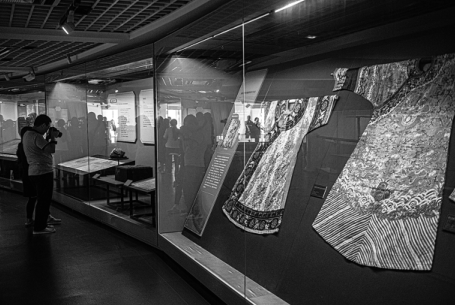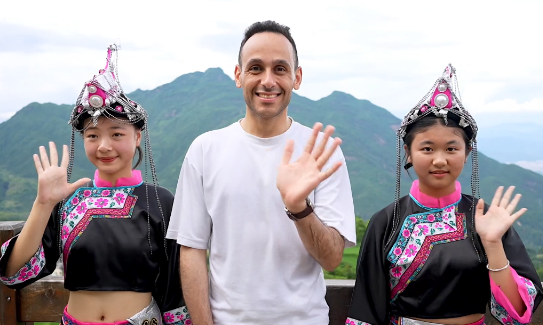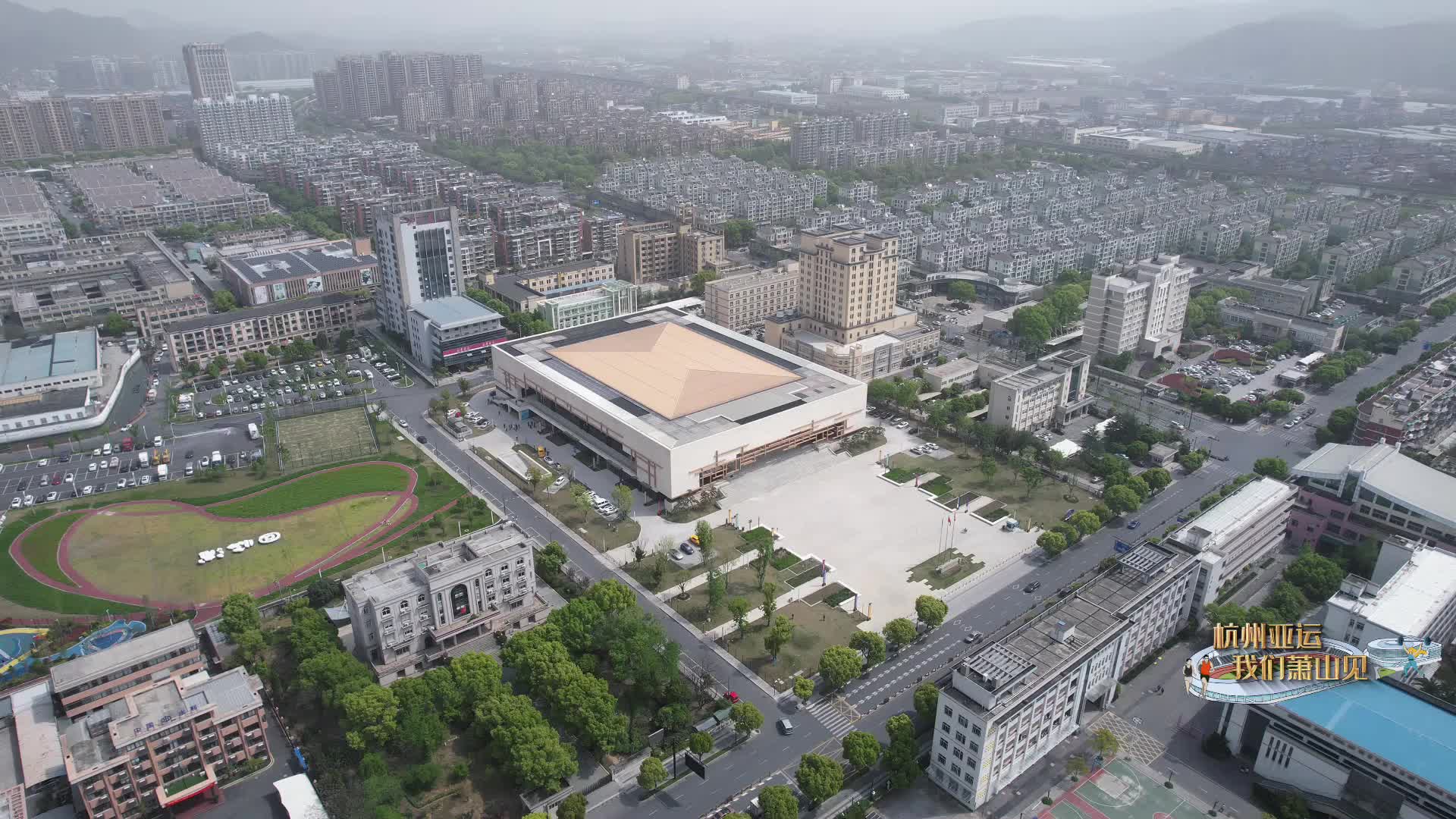Restorers bask in reflected glory as imperial robes go on show

Objects belonging to Empress Dowager Cixi and an imperial concubine of Emperor Qianlong on display at the China National Silk Museum in Hangzhou, Zhejiang province. The exhibition will run until November 8. [Photo by Jiang Han/China Daily]
According to Wang, the finest thread used for restoring the silk fabric was even thinner than one-ninth of a hair.
"The viewer will hardly notice the traces of restoration," she says.
Apart from the quilt, a restored imperial robe of Cixi's, bearing all the 12 symbols of sovereignty, is also on display.
The symbols, a series of ornaments such as the dragon and the sun, showed the emperors' distinguished status and were usually embroidered on the robes of royal family members and officials. During the Qing Dynasty, only emperors could have them all on their robes.
Cixi, however, was dressed in such a robe after her death.
The robe was also embroidered with 31 characters of Fo, meaning Buddha in Chinese, using gold thread and decorated with pearls, which showed the exalted status of the dowager, says Zhou.
The China National Silk Museum was opened to the public in 1992 and is the biggest research museum in the world that integrates antique collection, research, inheritance and display of textile clothing, says Zhao Feng, curator of the museum.
Zhou says the museum is like a "hospital" for textile fabrics where the craftsmen and women perform "surgery" on the textile heritage under the principle of repairing it as it would have been done originally.
"As a fabric restorer, it is our duty to save these relics," she said.
-
Foreign teacher, Hangzhou students capture picturesque countryside
August 9, 2023
-
Hangzhou Asian Games launch 50-day-to-go campaign
August 4, 2023
-
Hangzhou achieves 6.9% GDP growth in H1 2023
July 27, 2023



